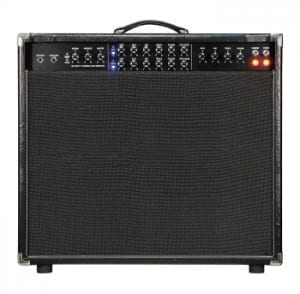The Differences Between Tube and Solid State Amps
We've written quite a bit for guitarists that use tube amps, including how often you change guitar amp tubes and the importance of matched tubes. But our amp discussion wouldn't be complete without throwing solid state models into the mix. Here we want to look at the differences between the two main types of electric guitar amps, as well as the advantages and disadvantages of each.

The Primary Difference
On a technical level, the difference between the two types of amps is very simple: tube amps use vacuum tubes to amplify a guitar signal, while solid state amps use electronics to provide amplification. But it’s the audible differences that make guitarist interested in the two different types of amps, not the tech specs.
Tube amps are typically described as “warm.” And though that term is hard to define, engineers quickly come to recognize it when they hear it. A good way to put it, however, comes from our studio glossary, which defines warm as a sound that is spacious with a good bass and mids response.
This warm sound is particularly desirable when those vacuum tubes are overloaded - resulting in a warm distortion sound known as overdrive Of course, there are innumerable overdrive pedals on the market that attempt to replicate this sound.
The sound of solid state amps depends largely on the exact circuitry of the amp. And though they are often seen by many guitarists as inferior, they have their own advantages that many guitarists desire.
Advantages of Solid State Amps
- More durable
Vacuum tubes are made of glass, so there is a constant possibility that the tubes can break, particularly those that are taken on the road. Solid State amps are inherently more durable because of their circuitry-based amplification method.
- Less Expensive
This may be the biggest advantage of solid state amps, as they usually are considerably less expensive than their tube amp counterparts.
- More Sound Options Available
Particularly in recent years, solid state amp manufacturers have begun taking advantage of the fact that the amps already contain circuitry and are adding built-in effects, creating modeling amps. For some guitarists, this eliminates the need for any additional effects pedals.
Advantages of Tube Amps
- Response
In addition to the aforementioned tone and overdrive advantages, many players prefer tube amps because of the response they offer. This means that the vacuum tubes can produce subtly different sounds based on the playing style of each guitar player, so the same amp can contribute to two separate styles of two different players. Solid state amps are typically more crisp, and don’t respond the nuances of a player.
- Good clean sounds
Related to the above, many players love the warm, clean sounds of a tube amp that can sound completely clean with a soft playing, but then slightly distort on a heavily accented note. That said, some players want a crisp clean sound regardless of how hard the play, and therefore prefer the crisper sound of a solid state amp.




